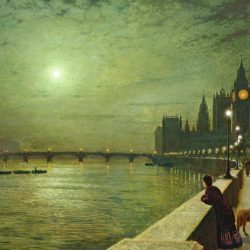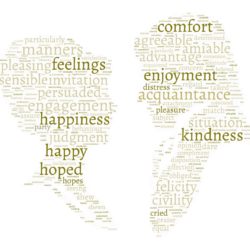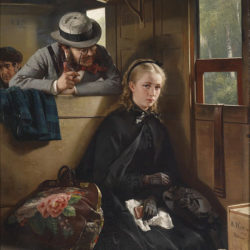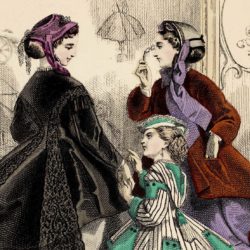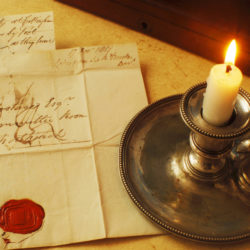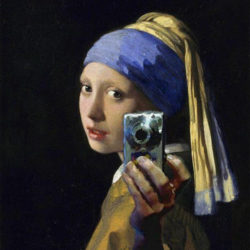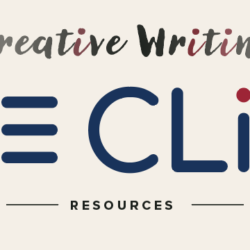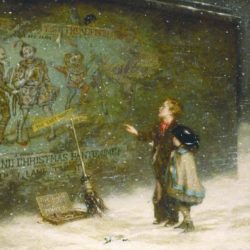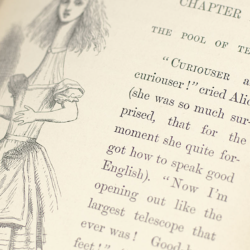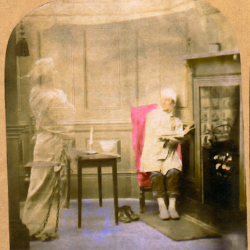Sauntering through London’s nocturnal neighbourhoods fuelled Charles Dickens’ imagination and provided him with ample material to people his fictional worlds. What can we learn from his immersive exploration of real-world urban landscapes? In the following activities we’ll take a step back in time using the CLiC Web App to journey through Victorian London via Dicken’s oeuvre. … Continue reading “Nightwalking by Magic Lantern, Finding Your Inner Flaneur with Charles Dickens”
Tag: teaching resources
#CLiCCreative Jane Austen Keywords Guide
#CLiCCreative demonstrates how the CLiC Web App can serve as both a creative resource and an innovative research tool for writers of historical fiction. You can find out more about the overarching project here. In this blog post, we’ve provided a keywords guide to our Jane Austen Corpus for aspiring writers of Regency fiction who … Continue reading “#CLiCCreative Jane Austen Keywords Guide”
Using CLiC as a Creative Research Tool: Journey to the Past
Whether by rail, on foot, via stagecoach, in a carriage, or aboard a ship, journeys play a pivotal role in novels of the long-nineteenth century. What can we learn about what it was like to travel in another time? In this research activity we’ll be using the CLiC Web App to learn about modes of … Continue reading “Using CLiC as a Creative Research Tool: Journey to the Past”
Using CLiC as a Creative Research Tool: Historical Ventriloquism
Ventriloquy is the art of speaking in such a way that one’s voice appears to come from another source. When it comes to writing believable dialogue, writers of historical fiction are a bit like ventriloquists. How can modern writers give the impression that their characters are conversing in the past? What research methods can we … Continue reading “Using CLiC as a Creative Research Tool: Historical Ventriloquism”
Using CLiC as a Creative Research Tool: Let there be Light
Using light as an example, this blog post demonstrates how the CLiC Web App can be used as an innovative research tool for creative writers of historical fiction. Previous #CLiCCreative posts by Dr Rosalind White are available here. This post is also available as a handout. From foreboding storms and moonlit moorland strolls to jovial fireside … Continue reading “Using CLiC as a Creative Research Tool: Let there be Light”
Using CLiC as a Creative Research Tool: Checking your Manuscript for Anachronisms
This post, penned by Dr Rosalind White (@DrRosalindWhite), will provide an overview of how our CLiC Web App can be used as an innovative historical research tool to cross-reference or verify historical details. This can help writers save time and energy, as well as quickly immerse them in the particulars of their preferred period. You … Continue reading “Using CLiC as a Creative Research Tool: Checking your Manuscript for Anachronisms”
Introducing #CLiCCreative, a Digital Resource and Research Tool for Writers
Today we have some exciting news. Professor Michaela Mahlberg (@MichaMahlberg)and Dr Rosalind White (@DrRosalindWhite) will be launching a new project, #CLiCCreative. If this is your first time on our blog, the CLiC Web App facilitates computer-assisted textual analysis of nineteenth-century literature. CLiC-assisted research has revealed recurring textual features of narrative fiction that are easily overlooked … Continue reading “Introducing #CLiCCreative, a Digital Resource and Research Tool for Writers”
Innocence and Ignorance: Concepts of Childhood Reflected in Charles Dickens’ A Christmas Carol
Fe Brewer is an English teacher and Lead Mentor in Leicester. She is the co-author of Succeeding as an English Teacher (Bloomsbury 2021) and presents regularly on English subject knowledge and education. In this post, she explores how Dickens’ portrayal of children echoes contemporary changes around the concept of childhood.
How can CLiC be used to teach English? Polysemy in Alice’s Adventures in Wonderland
In this post, students of the TESOL (Teaching English to Speakers of Other Languages) MA at the University of Birmingham blog about the CLiC Web App as a language learning resource. This post originated from a task set by Dr Viola Wiegand for ‘Corpus-Assisted Language Learning’, a TESOL module that encourages students to engage with the philosophy of data-driven learning. Many thanks to Weiqing Chu, Luyi Wang, Miaoting Wu and Xinzu Li for their fantastic contribution.
‘To Be Read at Dusk’: Ghost Hunting in the CLiC Corpora
Anya Eastman is a second-year Technê PhD student at Royal Holloway, University of London. Anya’s work explores the memorialisation of Charles Dickens, George Eliot and Oscar Wilde, with an emphasis on heritage and material culture. In addition to her doctoral research Anya is the co-director of Royal Holloway’s Centre for Victorian Studies and she has been on placement at the Charles Dickens Museum, working as a research assistant on the upcoming exhibition ‘To be Read at Dusk: Dickens, Ghosts and the Supernatural’. In this post, Anya explores Dickens’s ghosts using the CLiC corpora and discusses her findings alongside plans for the museum’s exhibition.

